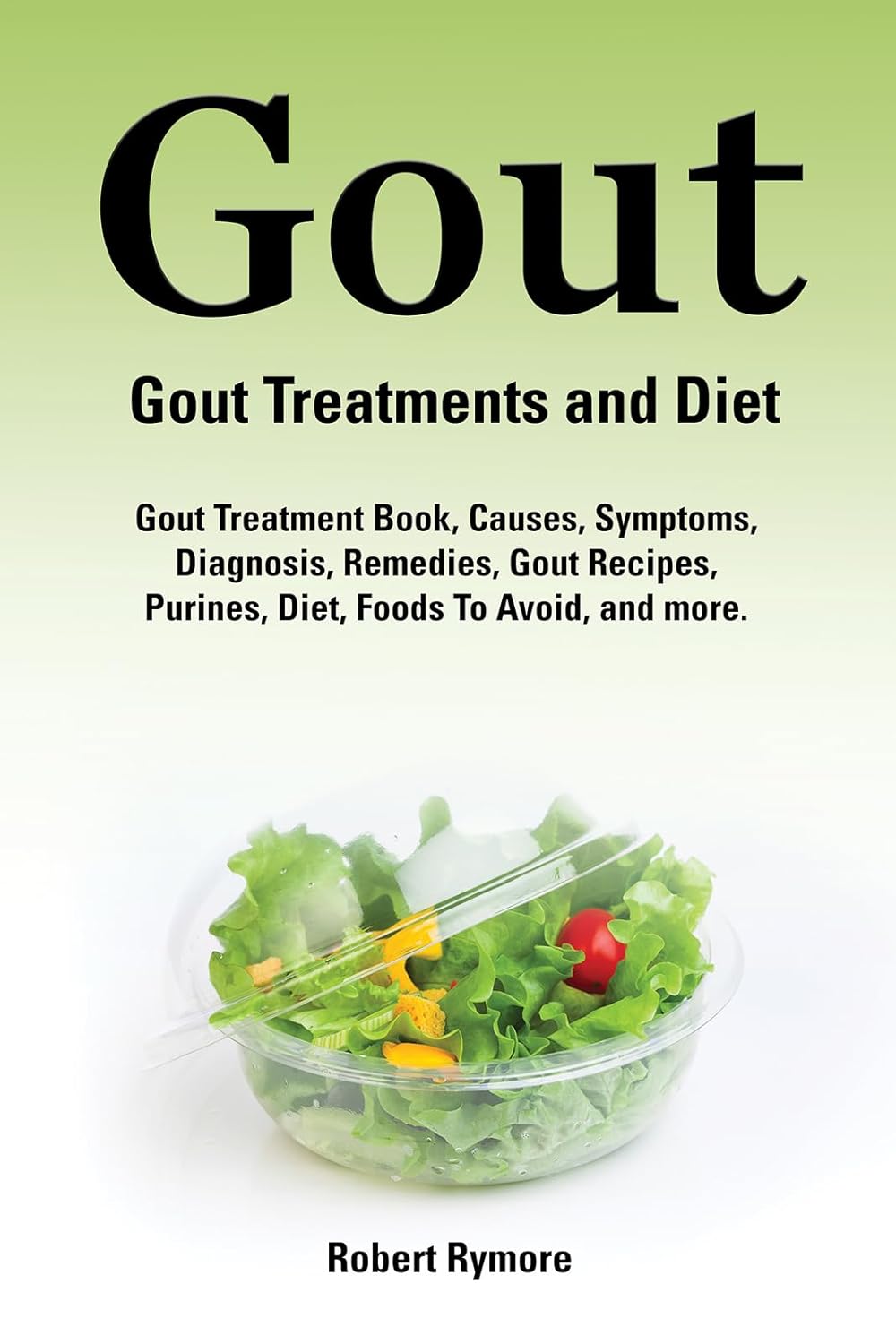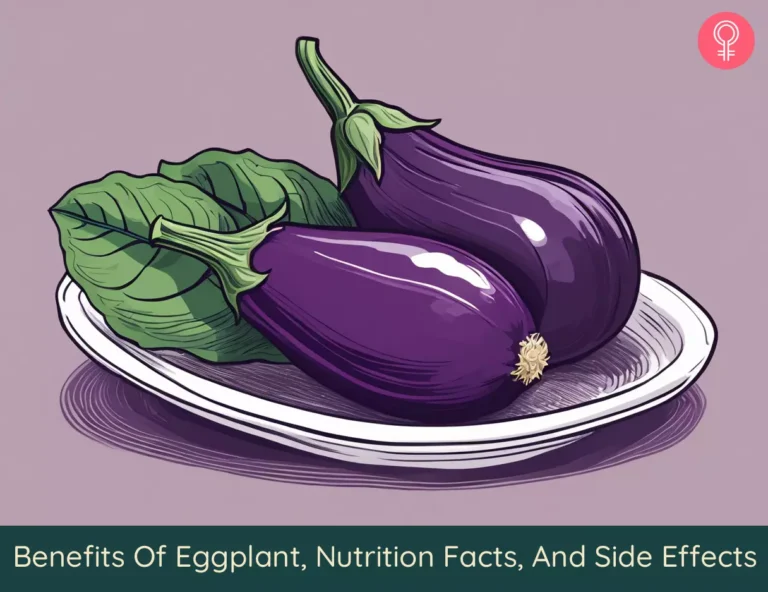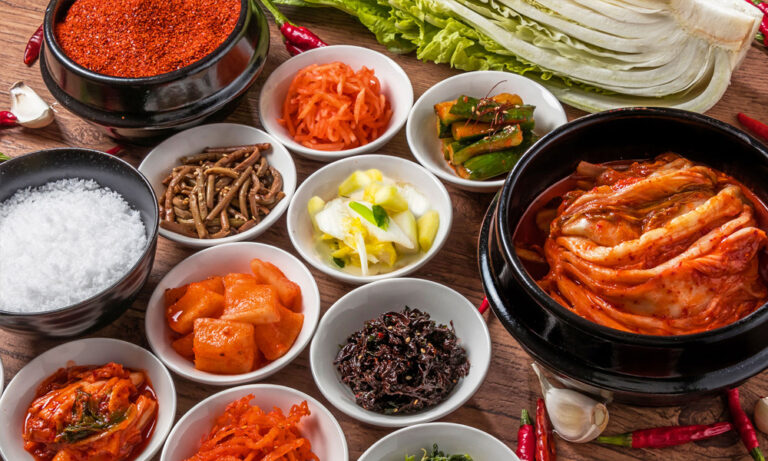Cherry-Picking Wisdom: Do Home Remedies Really Work for Gout?
In the quiet corners of our homes, whispered down through generations or discovered through the boundless avenues of the internet, lies a vast repository of wisdom. It’s a tapestry woven from personal experience, cultural tradition, and often, a desperate yearning for relief. When the searing agony of a gout flare strikes, the temptation to reach for a simple, natural solution – a concoction from the kitchen, an herbal infusion, a dietary tweak – can be overwhelming. This is the realm of home remedies, a landscape where hope often intertwines with science, and where the line between anecdotal success and evidence-based efficacy blurs.
Our journey into this intriguing world begins with gout itself, a disease as ancient as civilization, once dubbed the "disease of kings" due to its association with rich diets and copious alcohol consumption. Today, we understand gout to be a complex metabolic disorder, primarily characterized by hyperuricemia – an excess of uric acid in the blood. When uric acid levels become too high, it can crystallize, forming sharp, needle-like urate crystals that deposit in joints, most commonly the big toe, triggering an excruciating inflammatory response. The pain is legendary, often described as feeling like broken glass or a vice clamping down on the affected joint. It’s this intense suffering that drives many to seek solace outside conventional medicine, leading them to the sometimes-treacherous waters of home remedies.
The phrase "cherry-picking wisdom" perfectly encapsulates the approach many take when evaluating these traditional treatments. We tend to remember the successes, the glowing testimonials, the instances where a particular remedy seemed to coincide with a reduction in symptoms. We often forget or downplay the failures, the times a remedy offered no relief, or perhaps even exacerbated the problem. This cognitive bias, known as confirmation bias, is a powerful force, shaping our perceptions and reinforcing our beliefs, even in the face of contradictory evidence. For a knowledgeable audience, understanding this human tendency is crucial to critically assessing the claims surrounding home remedies for gout.
The Allure of Simplicity: Why Home Remedies Endure
Before we dissect specific remedies, it’s important to understand their enduring appeal. In an increasingly complex medical landscape, the promise of a simple, natural solution holds significant sway.
- Accessibility and Cost: Many home remedies utilize ingredients readily available in most kitchens or local grocery stores, often at a fraction of the cost of prescription medications.
- Perceived Safety: "Natural" often equates to "safe" in the public consciousness. There’s a widespread belief that substances derived from nature are inherently benign, a notion that isn’t always accurate.
- Empowerment: Taking charge of one’s health, actively participating in treatment, and feeling a sense of control over a debilitating condition can be incredibly empowering.
- Cultural and Familial Tradition: For many, home remedies are deeply embedded in their cultural heritage or family history, passed down through generations as a form of care and connection.
- Dissatisfaction with Conventional Medicine: Side effects from pharmaceutical drugs, long waiting times for appointments, or a desire for a more holistic approach can push individuals towards alternative treatments.
- The Placebo Effect: This powerful psychological phenomenon, where a patient experiences a real therapeutic effect simply because they believe they are receiving treatment, cannot be underestimated. While it doesn’t cure the underlying disease, it can alleviate symptoms, particularly pain, offering genuine, albeit temporary, relief.
However, for a condition like gout, which can lead to progressive joint damage, kidney stones, and chronic pain if left untreated, relying solely on unproven remedies carries significant risks.
The Cast of Characters: Popular Home Remedies for Gout
Let’s delve into some of the most frequently cited home remedies for gout and examine them through the dual lenses of popular belief and scientific scrutiny.
1. The Cherry Miracle: A Sweet Promise?
Perhaps no home remedy for gout is as ubiquitous as the cherry. Whether fresh, frozen, juiced, or in extract form, cherries are hailed as a natural panacea.
- The Claim: Cherries, particularly tart cherries, are believed to lower uric acid levels and reduce inflammation, thereby preventing and alleviating gout flares.
- The Rationale: Cherries are rich in anthocyanins, potent antioxidants and anti-inflammatory compounds that give them their vibrant red color. It’s theorized that these compounds interfere with inflammatory pathways and potentially aid in uric acid excretion.
- The Science: Several studies, ranging from observational to small clinical trials, have explored the link between cherry consumption and gout.
- An often-cited 2012 study published in Arthritis & Rheumatism found that cherry intake over a two-day period was associated with a 35% lower risk of gout attacks.
- Other research suggests that cherry juice concentrate can reduce plasma urate levels and markers of inflammation in healthy individuals and those with gout.
- The Caveat: While promising, most studies are relatively small, observational, or lack the rigorous control of large-scale randomized controlled trials (RCTs). The optimal dosage, form of cherry (juice vs. whole fruit), and long-term efficacy are still not definitively established. The effect, while positive, is generally modest compared to prescription medications.
- Verdict: Cherries show some scientific promise as an adjunctive therapy, potentially reducing the risk of flares and mildly impacting uric acid. They are generally safe to consume. However, they are unlikely to be a standalone cure or effective for acute, severe flares, and should not replace prescribed medications.
2. The Tangy Tonic: Apple Cider Vinegar
Another household staple, apple cider vinegar (ACV), is lauded for an astonishing array of health benefits, including its supposed ability to combat gout.
- The Claim: ACV alkalizes the body, breaks down uric acid crystals, and reduces inflammation.
- The Rationale: Proponents suggest that ACV helps restore the body’s pH balance, making it less acidic and thus inhospitable to uric acid crystal formation. Some also believe it contains acetic acid which aids in uric acid metabolism.
- The Science: This is where the narrative diverges sharply from evidence.
- There is no scientific evidence to support the claim that ACV directly lowers uric acid levels, dissolves uric acid crystals, or significantly alters systemic pH in a way that would impact gout. The body has robust homeostatic mechanisms to maintain a stable pH, and consuming ACV (or any food) is unlikely to override these.
- Any perceived benefit is likely attributable to the placebo effect or concurrent dietary changes.
- The Caveat: While generally safe when diluted, undiluted ACV can erode tooth enamel and irritate the esophagus. Large quantities can interact with certain medications, such as diuretics and insulin.
- Verdict: No scientific basis. While harmless in moderation, ACV is not a proven treatment for gout and should not be relied upon.
3. The Citrus Solution: Lemon Juice
Similar to ACV, lemon juice often appears on lists of gout remedies, usually mixed with water.
- The Claim: Lemon juice, despite being acidic, has an alkalizing effect on the body once metabolized, thereby neutralizing uric acid.
- The Rationale: The theory is that the citric acid in lemons is metabolized into carbonates and bicarbonates, which make the urine more alkaline. This, in turn, is thought to promote uric acid excretion.
- The Science:
- It is true that citrus fruits can slightly increase urine pH, which theoretically could help prevent kidney stones composed of uric acid.
- However, there’s limited direct evidence that lemon juice significantly lowers blood uric acid levels or effectively treats gout flares. The impact on systemic pH is minimal and transient.
- A 2015 study on patients with hyperuricemia found that consuming lemon juice did not significantly lower serum uric acid levels.
- Verdict: Limited scientific support for treating gout. While a healthy addition to a balanced diet and potentially helpful for kidney stone prevention, it’s not a standalone gout treatment.
4. The Baking Soda Boost: An Alkaline Assault
Baking soda (sodium bicarbonate) is another common household item touted for its ability to combat gout.
- The Claim: Baking soda alkalizes the body and dissolves uric acid crystals.
- The Rationale: Sodium bicarbonate is an antacid and can indeed make urine more alkaline, a principle utilized in some medical treatments for certain types of kidney stones.
- The Science:
- While baking soda can increase urine pH and theoretically aid in uric acid excretion, there’s no strong evidence from clinical trials demonstrating its efficacy in treating acute gout flares or significantly lowering blood uric acid levels in the long term.
- Furthermore, its use is not without risk. High sodium intake can be problematic for individuals with high blood pressure, heart failure, or kidney disease. It can also interfere with certain medications.
- Verdict: Unproven and potentially risky. Not recommended as a home remedy for gout without medical supervision.
5. The Botanical Brigade: Herbs and Spices
Beyond kitchen staples, a variety of herbs and spices are often proposed for gout management.
- Turmeric:
- Claim: Potent anti-inflammatory properties due to curcumin.
- Science: Curcumin has demonstrated anti-inflammatory effects in laboratory and animal studies, and some human trials for other inflammatory conditions. However, direct, robust evidence for its efficacy in treating gout is lacking. Its bioavailability is also a concern.
- Ginger:
- Claim: Anti-inflammatory and pain-relieving.
- Science: Gingerols and shogaols in ginger have known anti-inflammatory properties. Some studies suggest it can reduce pain and inflammation in conditions like osteoarthritis. While it might offer some symptomatic relief during a flare, there’s no evidence it lowers uric acid.
- Devil’s Claw:
- Claim: Anti-inflammatory and analgesic.
- Science: Contains harpagosides, which have demonstrated anti-inflammatory effects. It has been studied for osteoarthritis and back pain. While it might offer some pain relief, it does not address the underlying hyperuricemia. Can interact with blood thinners and other medications.
- Verdict: Some herbs and spices might offer mild symptomatic relief due to their anti-inflammatory properties, but none are proven to lower uric acid effectively or replace conventional treatment. They can also interact with medications.
6. The Lifestyle Foundation: Diet and Hydration
While often considered "home remedies," these are actually fundamental pillars of gout management supported by extensive scientific evidence.
- Hydration:
- Claim: Drinking plenty of water helps flush out uric acid.
- Science: Absolutely true. Adequate hydration helps the kidneys excrete uric acid more efficiently and reduces the risk of kidney stone formation. It’s a simple, effective, and evidence-based strategy.
- Low-Purine Diet:
- Claim: Avoiding purine-rich foods reduces uric acid production.
- Science: Partially true. Purines are compounds found in many foods that are broken down into uric acid. Limiting high-purine foods (e.g., red meat, organ meats, shellfish, certain fish like anchovies and sardines, high-fructose corn syrup, alcohol, especially beer) can help manage uric acid levels. However, dietary purines account for only a portion of the body’s total uric acid. Genetic factors and endogenous production play a larger role.
- The Caveat: A strict low-purine diet alone is often insufficient for individuals with significant hyperuricemia and rarely replaces the need for medication.
- Weight Management:
- Claim: Losing weight reduces the burden on joints and lowers uric acid.
- Science: Overweight and obesity are strong risk factors for gout and hyperuricemia. Losing weight can significantly improve uric acid levels and reduce the frequency and severity of flares.
- Verdict: Strong scientific support. These aren’t just home remedies; they are evidence-based lifestyle modifications that are crucial for managing gout, often in conjunction with medication.
The Double-Edged Sword: When Home Remedies Become Risky
While many home remedies are benign, their uncritical adoption carries significant risks, especially for a chronic condition like gout.
- Delaying Effective Treatment: The most dangerous pitfall is delaying or abandoning proven medical therapies in favor of unproven remedies. Gout, if left untreated, can lead to chronic pain, irreversible joint damage (tophi), kidney stones, and even kidney failure. Prescription medications like allopurinol, febuxostat (for uric acid lowering), and NSAIDs, colchicine, or corticosteroids (for acute flares) are highly effective and have undergone rigorous testing.
- Drug Interactions: "Natural" does not mean inert. Many herbs and supplements can interact dangerously with prescription medications. For example, some herbal remedies can affect blood clotting, interacting with anticoagulants, or alter the metabolism of drugs by the liver.
- Lack of Standardization and Quality Control: Unlike pharmaceuticals, the supplement industry is largely unregulated. Products can vary wildly in potency, purity, and even contain undeclared ingredients or contaminants. The actual amount of an active compound in a cherry extract, for instance, might be far less than what’s stated on the label.
- Toxicity and Side Effects: Even natural substances can be toxic in high doses or to susceptible individuals. For example, some herbal remedies can cause liver or kidney damage.
- False Sense of Security: Believing a home remedy is effectively managing gout can lead individuals to ignore worsening symptoms or neglect necessary medical monitoring, potentially allowing the disease to progress silently.
- Financial Exploitation: The market for unproven health remedies is vast and profitable, often preying on the desperation of those seeking relief.
The Science of Gout: A Brief Primer for the Knowledgeable
To truly appreciate the limitations of many home remedies, it’s essential to grasp the scientific understanding of gout.
Gout is a disease of purine metabolism. Purines are nitrogen-containing compounds found in our cells and in many foods. They are broken down into uric acid. Normally, uric acid is dissolved in the blood and filtered out by the kidneys, excreted in urine. In hyperuricemia, either the body produces too much uric acid, or the kidneys don’t excrete enough (or a combination of both).
When uric acid concentrations exceed a certain threshold, it precipitates out of solution and forms monosodium urate crystals. These crystals deposit in cooler peripheral joints, like the big toe, or in other tissues. When the immune system detects these foreign crystals, it mounts a fierce inflammatory response, recruiting white blood cells that release powerful inflammatory mediators (cytokines, prostaglandins), leading to the classic symptoms of swelling, redness, heat, and excruciating pain.
Modern pharmacological treatments directly target these mechanisms:
- Urate-Lowering Therapies (ULTs):
- Allopurinol and Febuxostat: These are xanthine oxidase inhibitors, meaning they block the enzyme responsible for converting purines into uric acid, thereby reducing its production.
- Probenecid and Lesinurad (often used with XOI): These are uricosuric agents that help the kidneys excrete more uric acid.
- Acute Flare Management:
- NSAIDs (e.g., ibuprofen, naproxen): Reduce inflammation and pain.
- Colchicine: Works by interfering with the inflammatory response to urate crystals.
- Corticosteroids (e.g., prednisone): Potent anti-inflammatory agents.
These medications have undergone rigorous clinical trials, demonstrating their efficacy and safety profiles. They work by directly intervening in the biological pathways of uric acid production, excretion, and inflammation. Many home remedies, by contrast, lack this specific, targeted mechanism of action, or their proposed mechanisms are not borne out by scientific investigation.
Reconciling Wisdom and Science: An Integrative Approach
Does this mean all home remedies are useless? Not necessarily. The key lies in critical thinking, an understanding of the underlying science, and a willingness to integrate, rather than substitute.
- Adjunctive, Not Replacement: Some home remedies, like consuming cherries or ginger, may offer mild anti-inflammatory benefits or contribute to overall wellness. When used in addition to prescribed medication and lifestyle changes, they might play a supportive role. They should never replace evidence-based medical treatment, especially for preventing long-term damage.
- Lifestyle as Foundation: The "home remedies" that truly work are the ones supported by robust scientific evidence: adequate hydration, a balanced diet low in purine-rich foods and high-fructose corn syrup, moderation of alcohol, and weight management. These are not just remedies; they are fundamental health practices.
- Consult Your Physician: This cannot be stressed enough. Before trying any new home remedy or supplement, especially if you are on medication, consult your doctor. They can advise on potential interactions, assess risks, and ensure that your overall treatment plan remains effective and safe.
- Listen to Your Body, But Verify with Science: Pay attention to how your body responds to different approaches. If something seems to offer relief, discuss it with your doctor. But always remember that perceived relief doesn’t always equate to addressing the root cause or preventing long-term complications.
- The Power of Placebo, Used Wisely: While the placebo effect shouldn’t be relied upon for serious conditions, acknowledging its power can sometimes be beneficial. If a safe, benign remedy provides symptomatic relief through this mechanism, and it doesn’t delay effective treatment, it might contribute to comfort.
The Story’s Enduring Lesson
The story of home remedies for gout is a microcosm of a larger human narrative: our eternal quest for healing, our trust in tradition, and our sometimes-uneasy relationship with scientific authority. It’s a story of hope, often tinged with desperation, and the powerful allure of simplicity in the face of complexity.
For the knowledgeable reader, the lesson isn’t to dismiss all traditional wisdom out of hand. Instead, it’s an invitation to engage with it critically. To ask: What is the evidence? What is the plausible mechanism? What are the risks? And most importantly, does it address the underlying disease or merely mask symptoms?
Gout, with its capacity for excruciating pain and long-term damage, demands a comprehensive, evidence-based approach. While a glass of cherry juice might offer a sweet, supportive addition to a well-managed treatment plan, it’s the scientifically proven interventions – the precise pharmacology, the meticulous lifestyle adjustments – that truly write the story of sustained relief and long-term health. The real wisdom lies not in blindly cherry-picking, but in discerning which fruits of knowledge are truly ripe with efficacy and safety.






